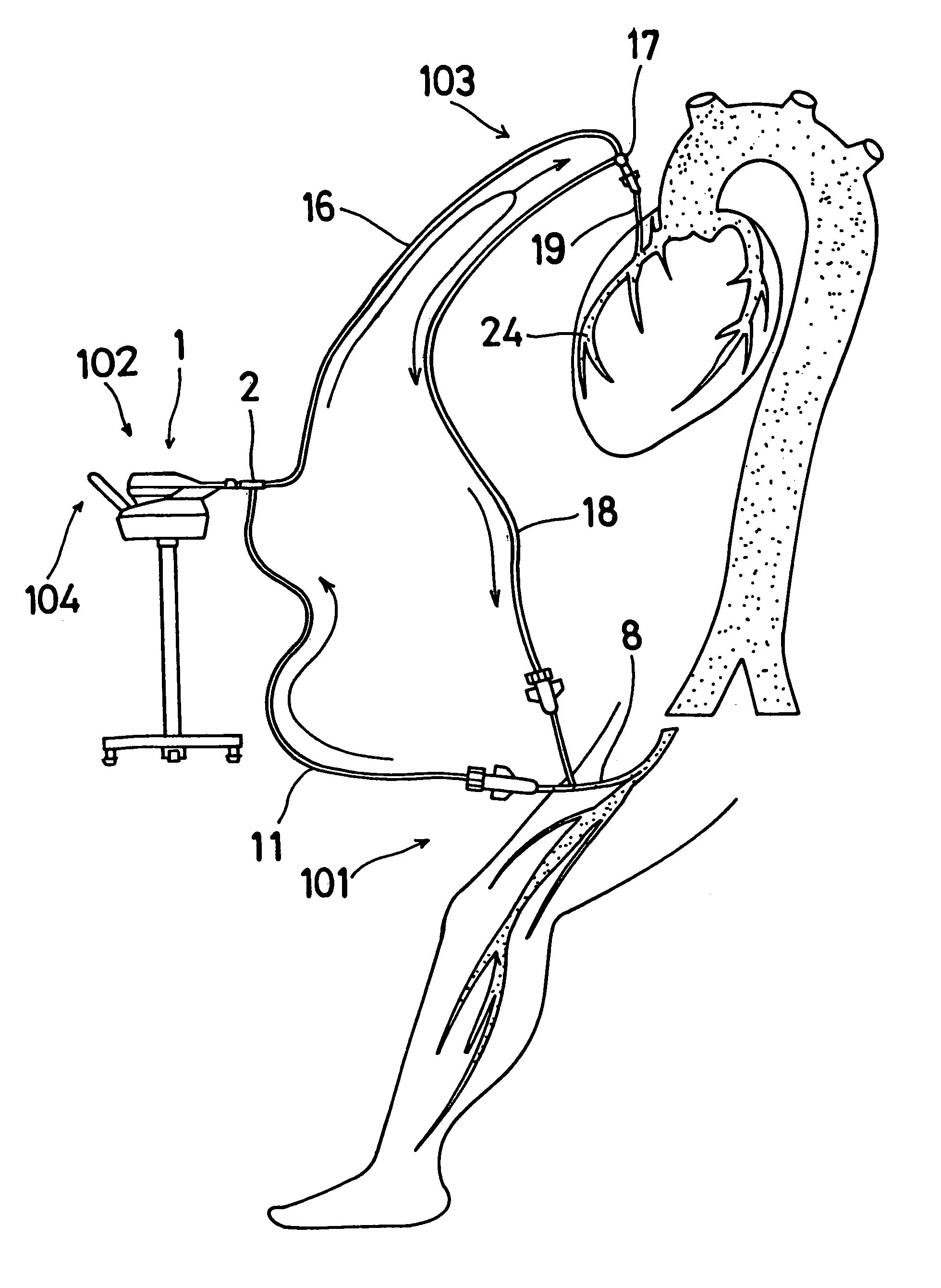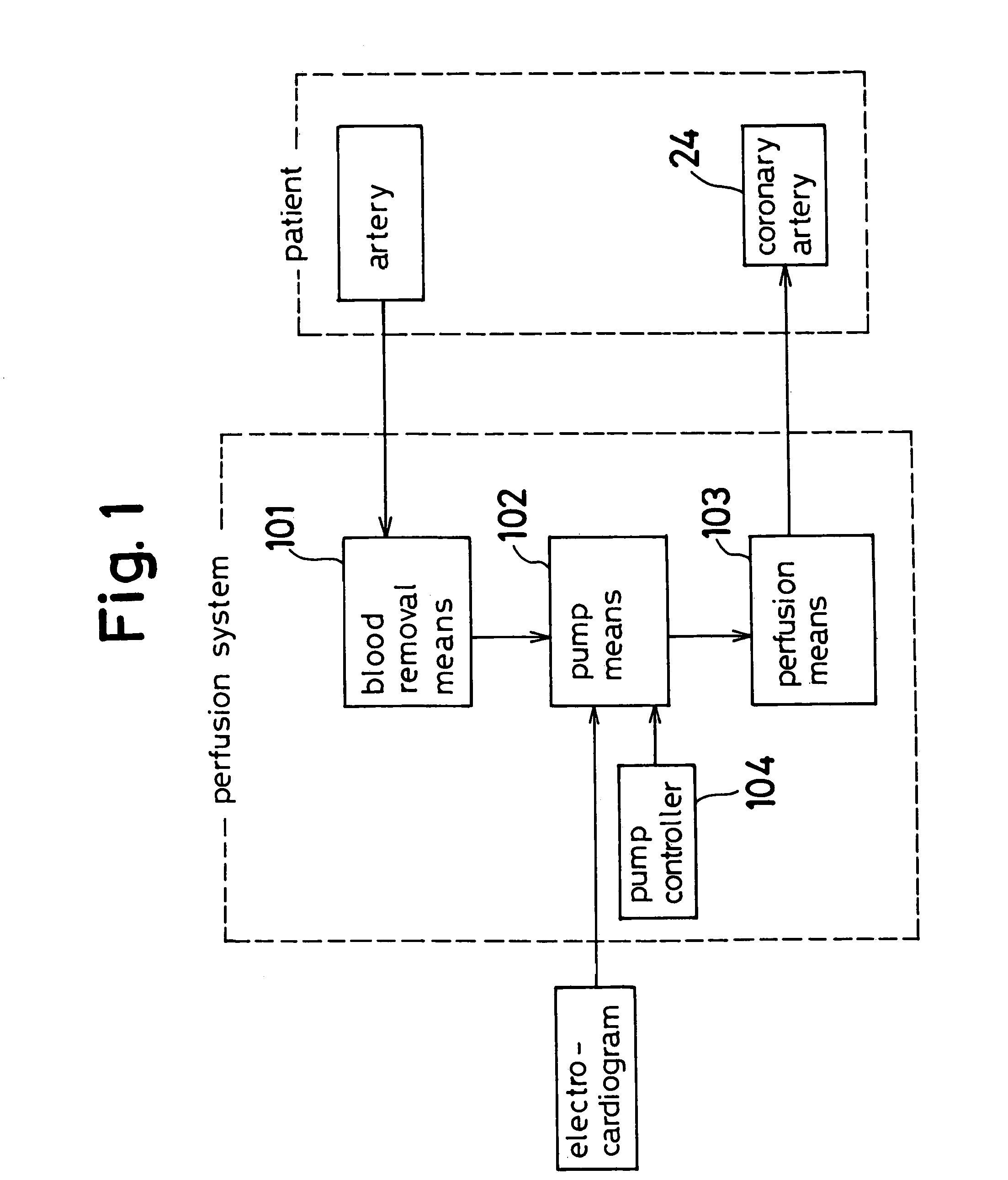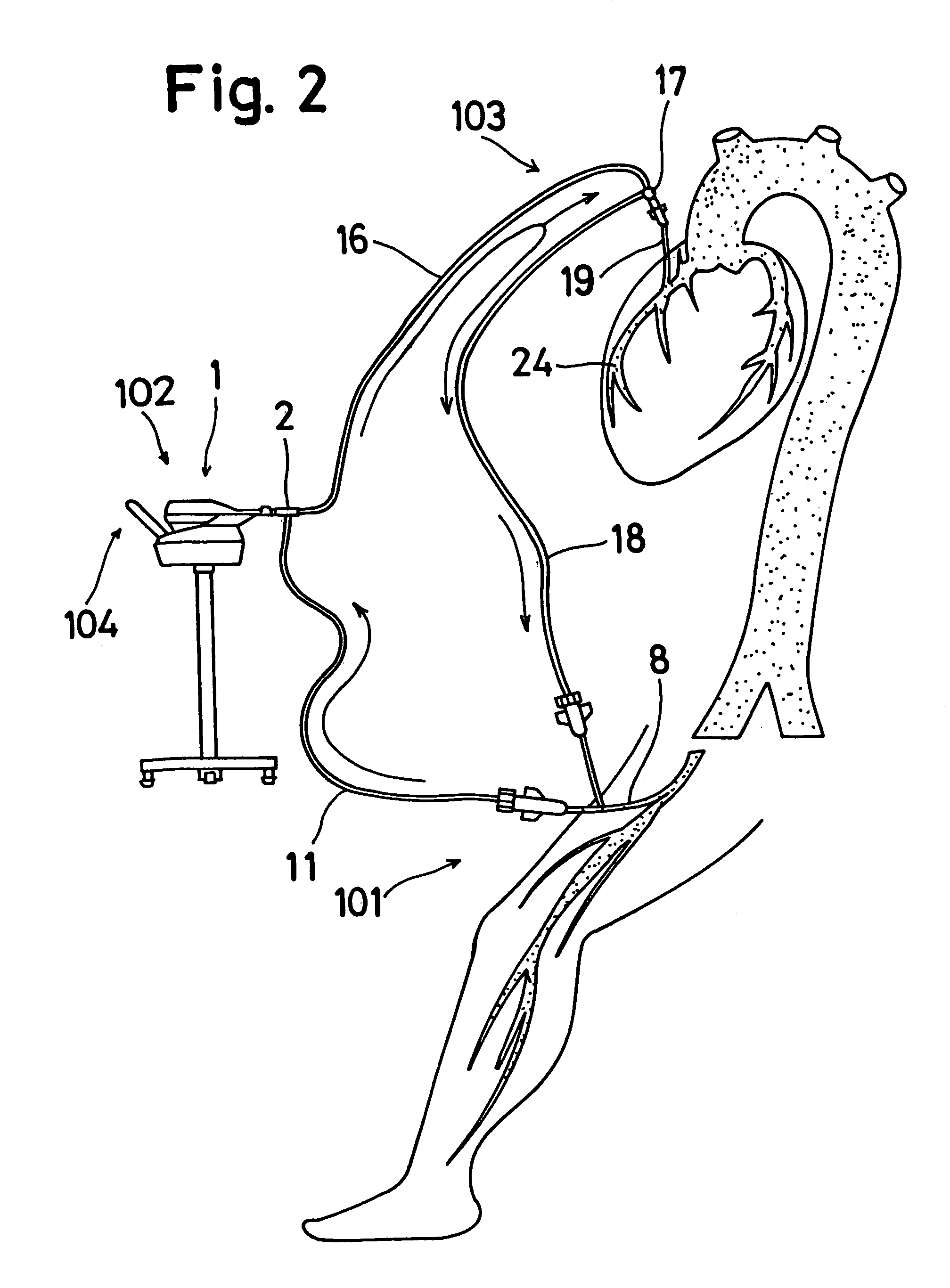Perfusion system for off-pump coronary artery bypass
a technology of coronary artery bypass and perfusion system, which is applied in the field of medical equipment, can solve the problems of turbulent blood flow, artery becomes subject to occlusion, and full occlusion of artery, and achieves the effect of ensuring the safety of catheter insertion into the coronary artery, ensuring the safety of the off-pump coronary artery bypass, and facilitating occlusion
- Summary
- Abstract
- Description
- Claims
- Application Information
AI Technical Summary
Benefits of technology
Problems solved by technology
Method used
Image
Examples
Embodiment Construction
[0057]A preferred embodiment of the present invention will be described hereinafter in detail with reference to the accompanying drawings.
[0058]First of all, with reference to FIG. 1, there is illustrated schematically a perfusion system for off-pump coronary artery bypass. The perfusion system includes a blood removal means 101 which is used for removing blood from a specific artery vessel of a patient (FIG. 2), a pump means 102 which injects the resulting blood, a perfusion means 103 which returns the pumped-out blood from the pump means 102 to a portion of a coronary artery, and a pump controller 104 which controls the pump means 102 in such a manner that the pump means 102 injects, in a pulsed fashion, a very small predetermined amount of the blood which comes from the blood removal means 101 at fixed rates in volume and speed during the diastolic phase of the cardiac cycle.
[0059]As shown in FIG. 2, in the perfusion system according to one embodiment of the present invention, th...
PUM
 Login to View More
Login to View More Abstract
Description
Claims
Application Information
 Login to View More
Login to View More - R&D
- Intellectual Property
- Life Sciences
- Materials
- Tech Scout
- Unparalleled Data Quality
- Higher Quality Content
- 60% Fewer Hallucinations
Browse by: Latest US Patents, China's latest patents, Technical Efficacy Thesaurus, Application Domain, Technology Topic, Popular Technical Reports.
© 2025 PatSnap. All rights reserved.Legal|Privacy policy|Modern Slavery Act Transparency Statement|Sitemap|About US| Contact US: help@patsnap.com



